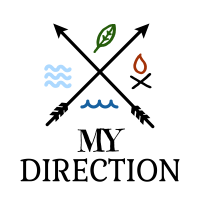Table of Contents
- Understanding Smoke Testing
- The Science Behind Smoke Testing
- The Impact on Environmental and Public Health
- Comparative Analysis of Diagnostic Techniques
- Conducting a Smoke Test: A Detailed Guide
- Overcoming Common Challenges in Smoke Testing
- Technological Evolution in Pipeline Inspection
Understanding Smoke Testing
The fundamentals of smoke testing are straightforward yet ingeniously effective. By introducing smoke into a pressurized sewer system, it quickly travels through pipes and surfaces wherever there are defects. This is a clear visual indicator of issues that require attention. The smoke used is specifically designed for this purpose; it’s typically non-toxic and harmless to humans, animals, and the environment. Properly conducted smoke tests can reveal not just major faults but also minor defects that could, over time, lead to significant problems. This preemptive approach is conducive to efficient repair scheduling and cost management for municipalities.
The Science Behind Smoke Testing
The science of smoke testing is rooted in the principles of fluid dynamics. Smoke, mimicking the characteristics of fluid in this context, seeks to move from areas of higher to lower pressure. Thus, when pumped into an enclosed pipeline, it will escape through any opening it encounters. This principle enables workers to detect even the smallest imperfections. Capturing these identification signs forms the crux of pipeline assessment, directing repair teams to specific locations rather than conducting system-wide excavations, thus achieving a balance between thorough assessment and economic resource allocation.
The Impact on Environmental and Public Health
Sewer systems are an unseen but critical component of urban health and environmental stability. Gaps, regardless of their size, pose a risk as they can allow contaminants to escape into the soil and groundwater or enable rodents and insects to enter the system. On the other hand, these openings can also allow excess water to infiltrate sewage lines, leading to unnecessary wastewater treatment costs. Smoke testing serves as an environmental stewardship tool, pinpointing areas of concern swiftly and effectively, which is vital for preventative maintenance strategies.
Comparative Analysis of Diagnostic Techniques
When compared with other diagnostic methods, such as closed-circuit television (CCTV) inspection or dye testing, smoke testing is less technologically complex and often more economical. CCTV inspections provide a more detailed view of the pipeline’s interior but can be more time-consuming and require more specialized equipment. Dye testing is useful in detecting more subtle infiltrations, especially in water bodies, but it lacks the immediacy of smoke testing’s visible cues. Each method has merits, and selecting the proper tool requires an understanding of the objectives at hand and the context within which the test is being performed. Identifying the correct strategy helps avoid unnecessary expenditures and focuses on accurate, actionable findings.
Conducting a Smoke Test: A Detailed Guide
To commence a smoke test, a set protocol is followed, beginning with community notification. The purpose of informing the public is to prevent undue alarms when smoke appears from sewers, drainpipes, or even buildings if defects exist. After this, the testing crew isolates sections of the pipeline and introduces the smoke. It is crucial to monitor the test’s progress meticulously, noting the smoke’s point of exit correlates with a map of the system. This mapping allows for an accurate assessment and targeted remediation efforts. A well-documented procedure is an exemplary practice that provides clarity and direction for future maintenance work.
Overcoming Common Challenges in Smoke Testing
Despite the relative simplicity of smoke testing, unforeseen challenges can and do arise. Difficulties such as varying air pressure, weather conditions, and the complexity of pipeline networks can influence the test’s outcomes. For instance, if smoke intrudes into residents’ homes, this could indicate dangerous breaks in the domestic plumbing that require immediate attention. Adequate preparation and experienced troubleshooting are paramount to handling such situations effectively. Professionals must adhere to safety protocols, including adhering to the standards set out by the Occupational Safety and Health Administration (OSHA), to protect both workers and the public.
Technological Evolution in Pipeline Inspection
The future of pipeline inspection and maintenance is one of constant innovation, where new technologies bring forth increased precision and safety while minimizing environmental impact. Developments in robotic systems, artificial intelligence, and advanced imaging are enhancing diagnostic capabilities. These advances are leading to smarter, more efficient approaches that promise not only to maintain infrastructure integrity but also to extend its lifespan. Continuous improvement in the tools and techniques for pipeline inspection ensures that sewer systems can keep pace with the evolving demands of modern life.





Leave a Reply